Timing Of Meals Affects Weight Loss
TIMING OF MEALS AFFECTS WEIGHT LOSS (ISSUE 65)
By Anahad O’Connor, Comments And Action Steps By Diane Gold
 In The New England Journal of Medicine last week, a prominent researcher noted that much of the conventional wisdom about weight loss has little basis in science. But his article did not address one oft-asked question: Is your waistline affected by when you eat, or is a calorie always just a calorie whenever you eat it?
In The New England Journal of Medicine last week, a prominent researcher noted that much of the conventional wisdom about weight loss has little basis in science. But his article did not address one oft-asked question: Is your waistline affected by when you eat, or is a calorie always just a calorie whenever you eat it?
To seasoned dieters, the claim that eating late can spell trouble is nothing new. But the idea has lacked evidence from credible human studies. Most of the research to date has shown that eating late is linked to weight gain, but late eaters also tend to consume more calories over all.
 In a new study, published in The International Journal of Obesity, researchers at Harvard and elsewhere followed 420 overweight men and women in Spain in a 20-week weight loss program.
In a new study, published in The International Journal of Obesity, researchers at Harvard and elsewhere followed 420 overweight men and women in Spain in a 20-week weight loss program.
The subjects were split into two groups. Each followed a similar diet, got equivalent amounts of sleep, and had similar caloric intakes and expenditures. They also showed no differences in two hormones that play a key role in appetite, leptin and ghrelin.
 But there was a critical difference in the timing of their main meal of the day, which in this case, because of the Mediterranean setting, was lunch. In both groups, the meal comprised about 40 percent of their daily calories. But one group consistently ate it before 3 p.m. daily, while the other did so after 3 p.m.
But there was a critical difference in the timing of their main meal of the day, which in this case, because of the Mediterranean setting, was lunch. In both groups, the meal comprised about 40 percent of their daily calories. But one group consistently ate it before 3 p.m. daily, while the other did so after 3 p.m.
By the end of the study, despite similar caloric intakes, the late eaters had lost significantly less weight. They also showed lower insulin sensitivity, which increases the risk of diabetes.
Weight loss strategies, the authors wrote, should focus not just on calories and nutrients, “but also the timing of food.”
THE BOTTOM LINE
The timing of your meals may not be everything when it comes to weight loss, but it does appear to play a role.
Link to original article is below.
COMMENTS AND ACTION STEPS
by Diane Gold
For about 3 years now, almost as long as I have been a vegan, I have chosen to finish my meals by 6 pm on purpose. On the rare occasion that I find myself eating evening dinner in company, I eat an additional meal of salad with no dressing. Or, if I can get away with it, I have a hot water, one of my favorite drinks.
When I traveled to a different time zone to see family, I ate in that time zone, 3 hours later, but, you guessed it. I went to bed 3 hours later, or more. And the 6 p.m. curfew was tough for the rest of the group (although they were quite accommodating), which is why so many people don’t even attempt the task.
So, why did I decide to do it?
 There were many times I experienced what it feels like to wake up the morning after drinking alcohol. In contrast and most of the time, I have experienced waking up feeling crystal clear, powerful, joyful and healthy. Once I decided to rid myself of drinking alcohol at all, I woke up lucid every morning. This got me to thinking.
There were many times I experienced what it feels like to wake up the morning after drinking alcohol. In contrast and most of the time, I have experienced waking up feeling crystal clear, powerful, joyful and healthy. Once I decided to rid myself of drinking alcohol at all, I woke up lucid every morning. This got me to thinking.
 But how alert would I be, I asked myself, if I could increase the period of time between my last meal and drink (except for hydrating water or green tea because the quercetin in it is a great anti-viral, anti-inflammatory, anti-cancer enzyme)?
But how alert would I be, I asked myself, if I could increase the period of time between my last meal and drink (except for hydrating water or green tea because the quercetin in it is a great anti-viral, anti-inflammatory, anti-cancer enzyme)?
So I decided to complete my last meal by 6 p.m. every night to see how I felt.
Oh, my. I felt great, and I continue to feel great using this eating schedule I recommend highly. It’s not for everyone, but here are a few facts that may contribute to why it makes sense:
1) As Anahad’s article mentions, there is scientific proof that shows that weight loss is directly related to eating earlier.
ACTION STEP
 Figure out a way to finish eating before 6 p.m. If you want to or have to socialize after that time (this will inevitably end up in eating), plan ahead that you will only eat raw greens in a salad with a little olive oil and lemon juice or a plate of steamed leafy greens with a drop of olive oil and lemon juice.
Figure out a way to finish eating before 6 p.m. If you want to or have to socialize after that time (this will inevitably end up in eating), plan ahead that you will only eat raw greens in a salad with a little olive oil and lemon juice or a plate of steamed leafy greens with a drop of olive oil and lemon juice.
2) Gravity helps digestion. When we are lying down (for sleep), we lose this benefit. Did you ever eat late and feel your food up high in your digestive tract when you were in bed? I have, but not recently.
ACTION STEP
Consciously decide to pay attention to the food in the stomach. Enjoy how it feels while you are upright, and notice when it seems to have gone down. This could be 3 or 4 hours after eating.
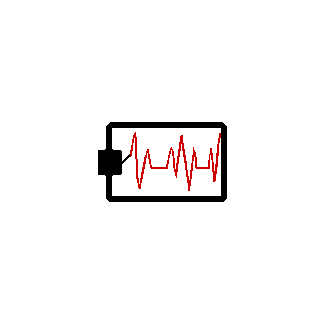 3) Our greatest risk of heart attack is in the early hours of the morning, according to Robert Manfredini of University of Ferrara, Italy, in a Time article, July 22, 2008. Because digestion utilizes blood and oxygen that would normally be employed by the heart and because respiration is reduced when we sleep; eating a large meal at night can divert too much of the body’s resources to digestion during the most vulnerable time in our daily cycle of physical processes. (Information from Ed in South Carolina, moderator of Paleohacks.com).
3) Our greatest risk of heart attack is in the early hours of the morning, according to Robert Manfredini of University of Ferrara, Italy, in a Time article, July 22, 2008. Because digestion utilizes blood and oxygen that would normally be employed by the heart and because respiration is reduced when we sleep; eating a large meal at night can divert too much of the body’s resources to digestion during the most vulnerable time in our daily cycle of physical processes. (Information from Ed in South Carolina, moderator of Paleohacks.com).
ACTION STEP
Now that we have spelled out some of the biological implications, really decide to finish eating at 6 pm. If there are family factors in the way, like children’s extra-curricular activities don’t finish until 7 p.m. or all family members aren’t home until 8 p.m.; start the routine of finishing by 6 p.m. every Saturday and Sunday or whatever days the family has “off.”
There are always excuses not to, so just do it! You and your family are worth it.
4) When we are not using our body’s resources for sleep-time digestion, we have a more restful sleep. Otherwise, our quality of sleep may be hindered (Jason Bellows, Stop And Breathe, Mar. 15, 2011).
ACTION STEP
The better we sleep, the more productive we will be the following day and the several days after that. The more we will be able to handle stress, and the more able we will be to follow a great eating plan to maximize our weight loss (gain) goals.

5) It feels good to lie down without the weight of recently eaten food in our GI tract. It’s 10 pm (4 hours since my last meal), and I’m already feeling that the food has digested. (This is not true, of course, since it takes a good 6-8 hours to pass through the stomach and small intestine, and then another 41-43 hours (as opposed to 27-29 hours in men) to go through the rest of the process, according to Michael F. Picco, Mayo Clinic GI, M.D.)
ACTION STEP
Enjoy how great it is to lie down without food feeling high in our digestive system. Eating early is a good way to prepare for sleep.
CONCLUSION
The idea of timing of meals affecting our weight loss and our health verifies an action we, humans, have been acting on for many years. Happily, there is proof in study form. Yes, we were correct, but now it is documented by researchers at Harvard et al.
Although the studies didn’t address the fact that when we eat later, there have been more hours in our day in which to eat; it is logical that, in reducing the waking hours we permit ourselves to eat, we automatically reduce our intake. This leads to weight loss.
FEEDBACK
Please leave a comment and LIKE.
ANAHAD O’CONNOR, AUTHOR
Anahad has been writing for the Science Section of the New York Times since 2003. He is passionate about investigative science and wellness reporting. He is one of our panelists whose full bio you will find in the Experts section.
The original article appeared on February 4, 2013 at this link:
DIANE GOLD, CO-AUTHOR
Diane Gold, Founder of Warriors of Weight, Turning Habits Into Health, is a mentor in tai chi, kung fu and meditation, a music, fitness and stress expert, dedicated mom, studying plant-based nutrition.
She is extremely excited to hear that her eating schedule was validated by a current scientific study . She says,
“There are so many weight loss misconceptions. It is exciting that I am using a technique that can be matched to scientific study and statistics. We know that eating earlier in our day feels better. Now we know that it promotes weight loss.
“Putting a time limit on food ingestion also creates the habit of learning to wait, which is something that dieters have to learn anyway. The self-imposed time restriction is a great way to learn it, and it makes it easier to cope with weight loss and weight maintenance after that.”

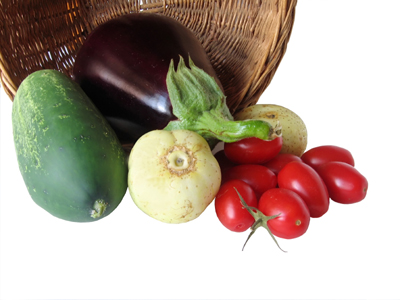 The protein myth has to do with combining proteins so as to consume all essential amino acids (the 9 that the body does not produce), the building blocks of protein, in 1 sitting. This concept was promoted in the 70s but was repudiated 10 years later as false and misleading.
The protein myth has to do with combining proteins so as to consume all essential amino acids (the 9 that the body does not produce), the building blocks of protein, in 1 sitting. This concept was promoted in the 70s but was repudiated 10 years later as false and misleading. Funny how habits stick with us so naturally. Think about before you knew how to ride a bike. Hard to recall because once we know, the steps to riding are ingrained in our head. For those of us who ride, there was a time when we didn’t. Now, it is second nature and never forgotten once learned. Take driving a car. The reflexes and reactions we use to accomplish safe driving are habits ingrained in that come back quickly if we put them down.
Funny how habits stick with us so naturally. Think about before you knew how to ride a bike. Hard to recall because once we know, the steps to riding are ingrained in our head. For those of us who ride, there was a time when we didn’t. Now, it is second nature and never forgotten once learned. Take driving a car. The reflexes and reactions we use to accomplish safe driving are habits ingrained in that come back quickly if we put them down. There are nebulous references all over current nutritional literature that talk about complete and incomplete protein. This is, in part, because many dieticians and nutritionists learn from books that still promote this combining idea or the superiority of a meat diet over a plant-based diet.
There are nebulous references all over current nutritional literature that talk about complete and incomplete protein. This is, in part, because many dieticians and nutritionists learn from books that still promote this combining idea or the superiority of a meat diet over a plant-based diet. “Is it true that complementary proteins must be eaten together to count as a complete protein source?
“Is it true that complementary proteins must be eaten together to count as a complete protein source?
 The industries that have the most advertising capital, meat and dairy, are the ones whose ads we see and hear. When was the last time we saw a billboard up saying how nutritionally sound spirulina was? Or kale juice from actual real, raw, unsprayed leaves?
The industries that have the most advertising capital, meat and dairy, are the ones whose ads we see and hear. When was the last time we saw a billboard up saying how nutritionally sound spirulina was? Or kale juice from actual real, raw, unsprayed leaves?
 2)
2)  Habits, as we know if we think about them, are patterns of behavior reinforced through repetition until they are almost involuntary action. Here’s a short list of these responses: eating oily, salty or sugary snacks to satisfy a food craving; verbally reacting to a child because that’s how we were raised; using mind/body-altering substances (prescribed or not) because we are tired, bored, nervous or emotional; shutting down our emotions because it’s safer than experiencing pain; acting out anger when someone challenges us; eating processed, unhealthy foods to escape; meditating before breakfast; brushing our teeth; taking our shoes off before we enter a residence; swimming after work; praying
Habits, as we know if we think about them, are patterns of behavior reinforced through repetition until they are almost involuntary action. Here’s a short list of these responses: eating oily, salty or sugary snacks to satisfy a food craving; verbally reacting to a child because that’s how we were raised; using mind/body-altering substances (prescribed or not) because we are tired, bored, nervous or emotional; shutting down our emotions because it’s safer than experiencing pain; acting out anger when someone challenges us; eating processed, unhealthy foods to escape; meditating before breakfast; brushing our teeth; taking our shoes off before we enter a residence; swimming after work; praying Because we are all so universally tied to habits and we all have them, WarriorsOfWeight.com now honors moms, daughters, fathers, sons, teen girls, teen boys, grandparents in focusing on and educating about Turning Habits Into Health and discussing all the astounding techniques to help each one of us along the way.
Because we are all so universally tied to habits and we all have them, WarriorsOfWeight.com now honors moms, daughters, fathers, sons, teen girls, teen boys, grandparents in focusing on and educating about Turning Habits Into Health and discussing all the astounding techniques to help each one of us along the way. Whether we speak about personal development techniques like tai chi, free dance techniques, music and its effects on balance, involvement in social change to get us personally where we want to be or the science of proper nutrition to maximize our bodies;
Whether we speak about personal development techniques like tai chi, free dance techniques, music and its effects on balance, involvement in social change to get us personally where we want to be or the science of proper nutrition to maximize our bodies; Turning
Turning  So what are the ways to make this miraculous change in habit? Do we have to turn ourselves inside out?
So what are the ways to make this miraculous change in habit? Do we have to turn ourselves inside out?



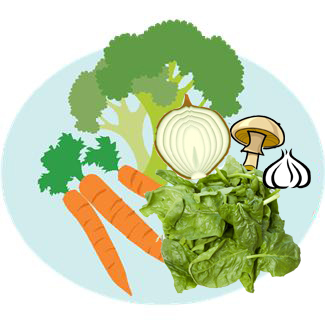 1)
1)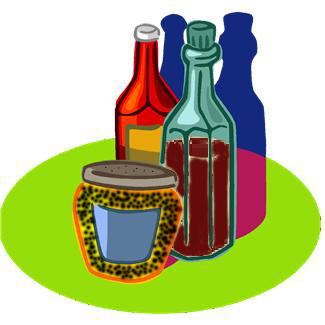 6)
6) 9)
9)
 “…whether organic foods carry a lower risk of cancer because they are less likely to be contaminated by compounds that might cause cancer is largely unknown,” but “vegetables, fruits, and whole grains should form the central part of a person’s diet, regardless of whether they are grown conventionally or organically.”
“…whether organic foods carry a lower risk of cancer because they are less likely to be contaminated by compounds that might cause cancer is largely unknown,” but “vegetables, fruits, and whole grains should form the central part of a person’s diet, regardless of whether they are grown conventionally or organically.” ORGANIC, NATURAL OR
ORGANIC, NATURAL OR  It’s difficult to farm produce without encountering nature’s little bugs that want to eat. In order that these natural organisms don’t eat all the produce, some form of protection in the form of a pesticide, either non-synthetic in organic food or synthetic in non-organic food, must be used.
It’s difficult to farm produce without encountering nature’s little bugs that want to eat. In order that these natural organisms don’t eat all the produce, some form of protection in the form of a pesticide, either non-synthetic in organic food or synthetic in non-organic food, must be used. The best way to get our food is to grow our own. Not practical for most of us, and this leaves us with having to dispose of the solids from our juicing. I have happily just connected with a local organic farmer who is willing to take my food waste since I am not a composter. WHOO-HOO! This succeeds in satisfying the responsibility we all have to diminish valuable waste. I am by no means taking a large step toward helping the planet in this regard, but I have taken 1 step.
The best way to get our food is to grow our own. Not practical for most of us, and this leaves us with having to dispose of the solids from our juicing. I have happily just connected with a local organic farmer who is willing to take my food waste since I am not a composter. WHOO-HOO! This succeeds in satisfying the responsibility we all have to diminish valuable waste. I am by no means taking a large step toward helping the planet in this regard, but I have taken 1 step.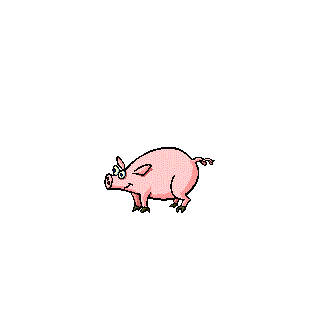 People often misunderstand the word “natural.” Anything that is processed minimally and does not contain a substance that does not occur organically (this is the scientific reference to organic meaning the way it grew) in the food is natural. That means pig’s feet are natural, fish broth is natural, apple sauce that does not have other ingredients that must be identified is natural.
People often misunderstand the word “natural.” Anything that is processed minimally and does not contain a substance that does not occur organically (this is the scientific reference to organic meaning the way it grew) in the food is natural. That means pig’s feet are natural, fish broth is natural, apple sauce that does not have other ingredients that must be identified is natural.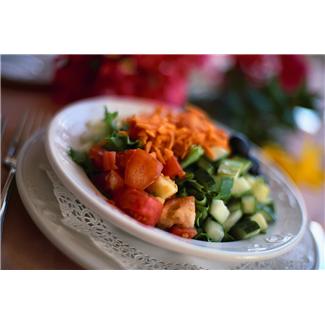 A much misunderstood word, vegan refers to a type of eating that does not include using animal products. That means no honey, no eggs, no dairy, no milk ingredients, anywhere, including in cake or bread or broth, no fish, no poultry, no meat. It does not mean organic. And, as we have mentioned, the word natural is non-specific.
A much misunderstood word, vegan refers to a type of eating that does not include using animal products. That means no honey, no eggs, no dairy, no milk ingredients, anywhere, including in cake or bread or broth, no fish, no poultry, no meat. It does not mean organic. And, as we have mentioned, the word natural is non-specific. 1) Whole Foods, for 1, talks about all the organic fruits and veggies they supply. Their produce changes from day to day, based upon availability and growing season, and it’s easy to confuse the physical locations of organic and non-organic food (termed “conventional food” so that the negative connotation from the word “non” is avoided). Their juice bar, as of the writing of this article, does not label whether their juice is or is not organic, so that the less informed customers will assume the juice is organic.
1) Whole Foods, for 1, talks about all the organic fruits and veggies they supply. Their produce changes from day to day, based upon availability and growing season, and it’s easy to confuse the physical locations of organic and non-organic food (termed “conventional food” so that the negative connotation from the word “non” is avoided). Their juice bar, as of the writing of this article, does not label whether their juice is or is not organic, so that the less informed customers will assume the juice is organic.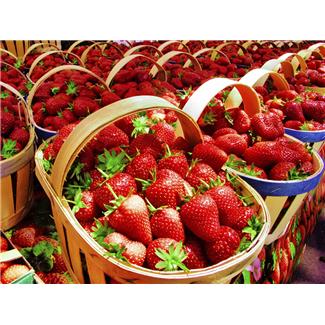 3) We don’t know how fresh the ingredients are that are being used in store-bought juice. Did you know that fruits and veggies only retain their nutrients for a set amount of days? And when some stores, usually supermarkets, get their produce truck; the produce is usually many days or even weeks old?
3) We don’t know how fresh the ingredients are that are being used in store-bought juice. Did you know that fruits and veggies only retain their nutrients for a set amount of days? And when some stores, usually supermarkets, get their produce truck; the produce is usually many days or even weeks old? 4) Finally, having someone serve us means no work for us, and yes pampering for us. Both great. Unless we think of juicing as a fun, joyous activity, which it can be. I just juiced some red cabbage. The color that came out of the juicer made me massively happy instantly. The color seemed so alive that it was much worth any “work” I had to do.
4) Finally, having someone serve us means no work for us, and yes pampering for us. Both great. Unless we think of juicing as a fun, joyous activity, which it can be. I just juiced some red cabbage. The color that came out of the juicer made me massively happy instantly. The color seemed so alive that it was much worth any “work” I had to do.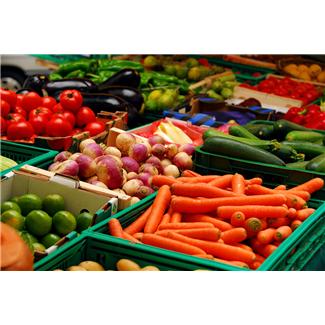 1) We know whether we have purchased organic produce because we inquire when we buy, and we use grocers we can trust. Hopefully, the suppliers of these grocers we trust follow organic protocol in their farming.
1) We know whether we have purchased organic produce because we inquire when we buy, and we use grocers we can trust. Hopefully, the suppliers of these grocers we trust follow organic protocol in their farming. 5) We can socialize with our family or relax in our own environment as we drink.
5) We can socialize with our family or relax in our own environment as we drink.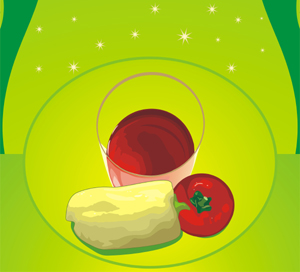 2)
2) Did you know that a huge amount of our world population does not have enough water or has to walk to get it? According to Kathleen Parker’s article, quoting Charles Fishman’s The Big Thirst (on my pending reading list), we, Westerners, use 18.5 gallons a day flushing our toilets while there is only 1/100th of 2.5 percent fresh water on the planet or, if the oceans were broken down into mass, 2.5% of the Earth’s mass. Not a lot.
Did you know that a huge amount of our world population does not have enough water or has to walk to get it? According to Kathleen Parker’s article, quoting Charles Fishman’s The Big Thirst (on my pending reading list), we, Westerners, use 18.5 gallons a day flushing our toilets while there is only 1/100th of 2.5 percent fresh water on the planet or, if the oceans were broken down into mass, 2.5% of the Earth’s mass. Not a lot. Let’s look at what happens when we start to feel the twinges of hunger. These urges might be immediately after eating, 10 minutes after eating, an hour after, 3 hours apart or more. The amount of time between cravings is a non-judgmental number. The craving begins as an itch, which shows up when it shows up. If we don’t judge ourselves, we won’t be judged! Its intensity determines the level of self-control we need to master it.
Let’s look at what happens when we start to feel the twinges of hunger. These urges might be immediately after eating, 10 minutes after eating, an hour after, 3 hours apart or more. The amount of time between cravings is a non-judgmental number. The craving begins as an itch, which shows up when it shows up. If we don’t judge ourselves, we won’t be judged! Its intensity determines the level of self-control we need to master it. 3)
3)
 After we begin, it will be get much easier for us to recognize and acknowledge it when we have a food urge. Whereas before, we might have felt we had to sneak to eat, we will no longer have to sneak, since our first line of food defense can be healthy, wonderful water. Whereas before, we might have felt guilty for eating mindlessly, we can feel pride because we are eating as part of a technique.
After we begin, it will be get much easier for us to recognize and acknowledge it when we have a food urge. Whereas before, we might have felt we had to sneak to eat, we will no longer have to sneak, since our first line of food defense can be healthy, wonderful water. Whereas before, we might have felt guilty for eating mindlessly, we can feel pride because we are eating as part of a technique.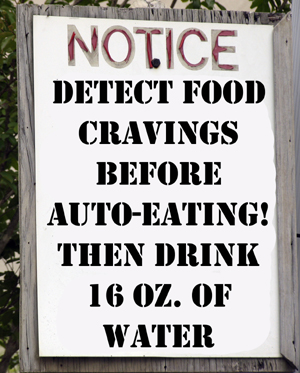 The act of making change takes time and effort. That includes water for weight loss. The biggest effort is in training the mind (changing a habit) that when we have a food craving, we need to embrace it. We need to drink 16 oz. of water, slowly. This is great in theory, but…
The act of making change takes time and effort. That includes water for weight loss. The biggest effort is in training the mind (changing a habit) that when we have a food craving, we need to embrace it. We need to drink 16 oz. of water, slowly. This is great in theory, but…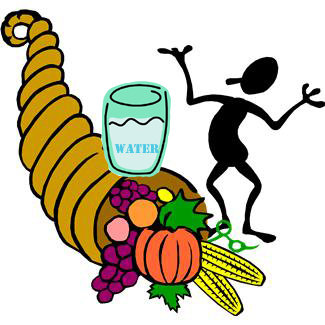 For those of us in the United States and some other countries, we can be extra thankful that we do have water readily available. 2/3 of world families do not (National Geographic Society Geography Awareness Week, 2010). They have to walk to get their water; they have to transport it on shoulders, backs or holding buckets.
For those of us in the United States and some other countries, we can be extra thankful that we do have water readily available. 2/3 of world families do not (National Geographic Society Geography Awareness Week, 2010). They have to walk to get their water; they have to transport it on shoulders, backs or holding buckets. There is much evidence that plant-based nutrition helps rid us of a variety of modern-day ailments. However, major “Western” food manufacturers downplay it. After all, what would happen to their food consumption if even 50% of the people who now eat meat/fish/fowl/dairy/eggs changed their ways?. What would manufacturers do if people in the United States stopped eating processed foods?
There is much evidence that plant-based nutrition helps rid us of a variety of modern-day ailments. However, major “Western” food manufacturers downplay it. After all, what would happen to their food consumption if even 50% of the people who now eat meat/fish/fowl/dairy/eggs changed their ways?. What would manufacturers do if people in the United States stopped eating processed foods?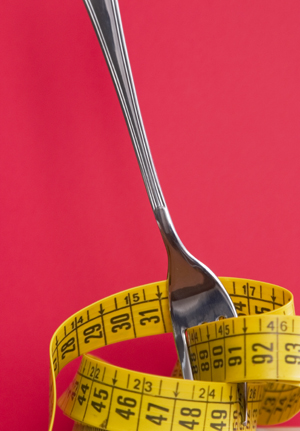
 Let’s look at soda, including diet-soda. The highest source of calories of any food in the United States is soda. It is an acid-forming food along with diet soda, which has no calories but is in the same acid category. Both regular and diet soda contain phosphoric acid, all the way over on the acid side of acid-forming foods.
Let’s look at soda, including diet-soda. The highest source of calories of any food in the United States is soda. It is an acid-forming food along with diet soda, which has no calories but is in the same acid category. Both regular and diet soda contain phosphoric acid, all the way over on the acid side of acid-forming foods. Did you know that saliva is alkaline and that if you chew more, you enable the digestive process? Many monks profess that we chew our food 50 times before swallowing. This will predigest the food and liquify it. It will provide a time for us to appreciate the food without rushing. Now, I know it will certainly combine well with alkaline saliva for body health.
Did you know that saliva is alkaline and that if you chew more, you enable the digestive process? Many monks profess that we chew our food 50 times before swallowing. This will predigest the food and liquify it. It will provide a time for us to appreciate the food without rushing. Now, I know it will certainly combine well with alkaline saliva for body health.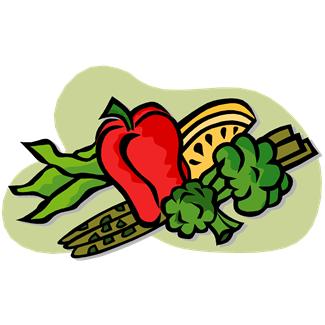 Feel good, feel balanced. Consider eating plant-based nutrition for a proper pH level. Keep the body in the best position for losing weight, and learn which foods are alkaline and eat them.
Feel good, feel balanced. Consider eating plant-based nutrition for a proper pH level. Keep the body in the best position for losing weight, and learn which foods are alkaline and eat them. The weight loss goal is huge because it relates to almost every aspect of our everyday lives. Often times, we have to change many behaviors of our eating process in order to change 1: the way we move, the way we rest and the restaurant or food preparation routines we have grown to love.
The weight loss goal is huge because it relates to almost every aspect of our everyday lives. Often times, we have to change many behaviors of our eating process in order to change 1: the way we move, the way we rest and the restaurant or food preparation routines we have grown to love. I know it always takes me a few minutes to process the possibility of change, a few minutes to get used to the idea and another several minutes to accept the change. This usually takes a good 30 minutes. It’s very comforting to watch myself through this process. I usually laugh at myself during it, as I am so predictable to myself. Luckily for me, because of my mother’s bright attitude and the practicality for which my martial arts work has prepared me, I always, and I mean always, end up looking for the good in the crossroads.
I know it always takes me a few minutes to process the possibility of change, a few minutes to get used to the idea and another several minutes to accept the change. This usually takes a good 30 minutes. It’s very comforting to watch myself through this process. I usually laugh at myself during it, as I am so predictable to myself. Luckily for me, because of my mother’s bright attitude and the practicality for which my martial arts work has prepared me, I always, and I mean always, end up looking for the good in the crossroads. 1) We can rebel and stomp our feet at our new situation. If we turn music on and stomp to it, we can turn our reaction into a totally therapeutic action. Verbalizing to the music helps us to accept the change, too, as is done in improv or rap.
1) We can rebel and stomp our feet at our new situation. If we turn music on and stomp to it, we can turn our reaction into a totally therapeutic action. Verbalizing to the music helps us to accept the change, too, as is done in improv or rap.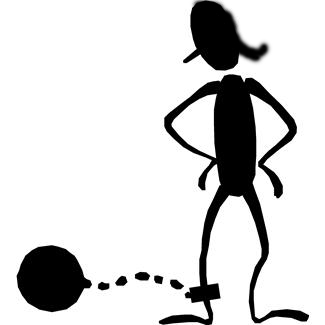
 3) We can remain calm, ask for help if we need it and look at the pros of our new situation. Of course, it’s always good to be balanced and positive. Not always easy and not always sensible. It always pays to stay aware and focused.
3) We can remain calm, ask for help if we need it and look at the pros of our new situation. Of course, it’s always good to be balanced and positive. Not always easy and not always sensible. It always pays to stay aware and focused. Pick 1)(a) or 1)(b) to start.
Pick 1)(a) or 1)(b) to start. Life is full of crossroads. They always show up, in our personal lives and in our lives as global citizens. Every time we make a life decision, we are at a crossroads. Every time we vote, we are at a crossroads. We can look at our choices as necessary steps leading us forward. We can also savor the opportunities they bring and use the pro and con method to ensure that we come to the most efficient understanding of our crossroads as they arrive.
Life is full of crossroads. They always show up, in our personal lives and in our lives as global citizens. Every time we make a life decision, we are at a crossroads. Every time we vote, we are at a crossroads. We can look at our choices as necessary steps leading us forward. We can also savor the opportunities they bring and use the pro and con method to ensure that we come to the most efficient understanding of our crossroads as they arrive.

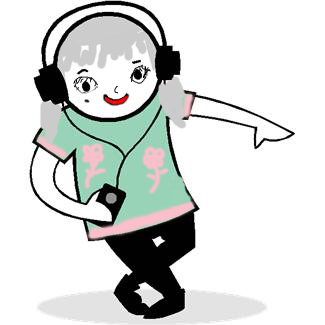
 I remember lunch time when I was in 5th and 6th grades in New York. We had a record player outside in the school yard. Every day, I would bring my 45 RPM records to class so that we could dance. True, there were so many people singing rhythm and blues and rock and roll, so it was much easier to keep track of the latest and greatest records, as opposed to present day when there are hundreds of new artists coming out every minute because of the ease of technology. It’s great to have such technological access!
I remember lunch time when I was in 5th and 6th grades in New York. We had a record player outside in the school yard. Every day, I would bring my 45 RPM records to class so that we could dance. True, there were so many people singing rhythm and blues and rock and roll, so it was much easier to keep track of the latest and greatest records, as opposed to present day when there are hundreds of new artists coming out every minute because of the ease of technology. It’s great to have such technological access!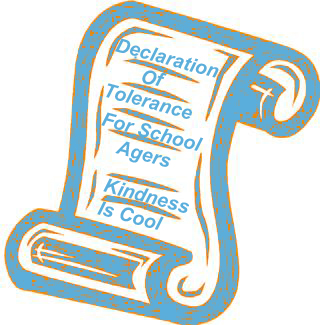 DECLARATION OF TOLERANCE FOR SCHOOL AGERS: KINDNESS IS COOL (ISSUE 53)
DECLARATION OF TOLERANCE FOR SCHOOL AGERS: KINDNESS IS COOL (ISSUE 53)
 We follow others, as kids and adults. We call this social proof. If no one goes to help the person who fell down and everyone walks by with no regard; we are less likely to rush to help the afflicted person.
We follow others, as kids and adults. We call this social proof. If no one goes to help the person who fell down and everyone walks by with no regard; we are less likely to rush to help the afflicted person. Kids form belief systems and opinions at home, in school and with peer groups. It is a given that we are influenced on a grand scale by our parents, our caretakers. Prejudice in the home rubs off. But many kids have their first encounter with intolerance, either as target or aggressor, in school.
Kids form belief systems and opinions at home, in school and with peer groups. It is a given that we are influenced on a grand scale by our parents, our caretakers. Prejudice in the home rubs off. But many kids have their first encounter with intolerance, either as target or aggressor, in school.
 2)
2) 4)
4) 6)
6) 10)
10) 11)
11)





